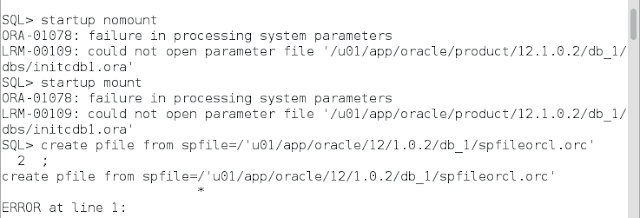ORACLE BANGLA FONT SET UP FOR WINDOWS 10
1.DOWNLOAD SolaimanLipi.ttf
download url:https://www.omicronlab.com/bangla-fonts.html
2.Install SolaimanLipi.ttf
3. go to windows c and [search fonts]
C> write Fonts [pest solaimanlipi.ttf]
4.C:\Program Files (x86)\Java\jre1.8.0_144\lib\fonts
SolaimanLipi.ttf
If JDK same as jre
C:\Program Files (x86)\Java\jdk1.8.0_144\jre\lib\fonts
SolaimanLipi.ttf
5. E> Oracle > [search registry.dat]
E:\app\oracle\config\domains\frm\config\fmwconfig\servers\WLS_FORMS\applications\formsapp_12.2.1\config\oracle\forms\registry
default.fontMap.defaultFontname=[SolaimanLipi]
default.fontMap.defaultSize=900
default.fontMap.defaultStyle=PLAIN
default.fontMap.defaultWeight=PLAIN
default.fontMap.appFontnames=Courier New,Courier,courier,System,Terminal,Fixed,Fixedsys,Times,Times New Roman,MS Sans Serif,Arial,Vrinda,SolaimanLipi
default.fontMap.javaFontnames=MonoSpaced,MonoSpaced,MonoSpaced,Dialog,MonoSpaced,Dialog,Dialog,Serif,Serif,Dialog,SansSerif,SolaimanLipi
write end of line , solaimanlipi
For Report Configuration
E:\app\oracle\config\domains\frm\config\fmwconfig\components\ReportsToolsComponent\reptools1\tools\COMMON
uifont.ali
Go to Oracle folder and search [fonts]
pset solaimanlipi all fonts folder.
E:\app\oracle\product\12.1.0\dbhome_1\javavm\lib\fonts
Pest SolaimanLipi font
E:\app\oracle\product\12.1.0\dbhome_1\jdk\jre\lib\fonts
E:\app\oracle\product\Mid_home\oracle_common\rda\da\public_html\ui\fonts
E:\app\oracle\product\Mid_home\oracle_common\jdk\jre\lib\fonts
E:\app\oracle\config\domains\frm\reports\fonts
E:\app\oracle\JDK\jre\lib\fonts
Run >regedit
Computer\HKEY_LOCAL_MACHINE\SOFTWARE\ORACLE
search NLS_LANG
ALL PLACE CHANGE UTF8 [ASIAN LNS_LANG MODEL ULT32UTG IS USED FOR EUPOR, AMERICA UNICODE FONT , FOR ASIAN FONT UTF8]
jUST replace[AMERICAN_AMERICA.UTF8] all oracle LNS_LANG
1.DOWNLOAD SolaimanLipi.ttf
download url:https://www.omicronlab.com/bangla-fonts.html
2.Install SolaimanLipi.ttf
3. go to windows c and [search fonts]
C> write Fonts [pest solaimanlipi.ttf]
4.C:\Program Files (x86)\Java\jre1.8.0_144\lib\fonts
SolaimanLipi.ttf
If JDK same as jre
C:\Program Files (x86)\Java\jdk1.8.0_144\jre\lib\fonts
SolaimanLipi.ttf
5. E> Oracle > [search registry.dat]
E:\app\oracle\config\domains\frm\config\fmwconfig\servers\WLS_FORMS\applications\formsapp_12.2.1\config\oracle\forms\registry
default.fontMap.defaultFontname=[SolaimanLipi]
default.fontMap.defaultSize=900
default.fontMap.defaultStyle=PLAIN
default.fontMap.defaultWeight=PLAIN
default.fontMap.appFontnames=Courier New,Courier,courier,System,Terminal,Fixed,Fixedsys,Times,Times New Roman,MS Sans Serif,Arial,Vrinda,SolaimanLipi
default.fontMap.javaFontnames=MonoSpaced,MonoSpaced,MonoSpaced,Dialog,MonoSpaced,Dialog,Dialog,Serif,Serif,Dialog,SansSerif,SolaimanLipi
write end of line , solaimanlipi
For Report Configuration
E:\app\oracle\config\domains\frm\config\fmwconfig\components\ReportsToolsComponent\reptools1\tools\COMMON
uifont.ali
Go to Oracle folder and search [fonts]
pset solaimanlipi all fonts folder.
E:\app\oracle\product\12.1.0\dbhome_1\javavm\lib\fonts
Pest SolaimanLipi font
E:\app\oracle\product\12.1.0\dbhome_1\jdk\jre\lib\fonts
E:\app\oracle\product\Mid_home\oracle_common\rda\da\public_html\ui\fonts
E:\app\oracle\product\Mid_home\oracle_common\jdk\jre\lib\fonts
E:\app\oracle\config\domains\frm\reports\fonts
E:\app\oracle\JDK\jre\lib\fonts
Run >regedit
Computer\HKEY_LOCAL_MACHINE\SOFTWARE\ORACLE
search NLS_LANG
ALL PLACE CHANGE UTF8 [ASIAN LNS_LANG MODEL ULT32UTG IS USED FOR EUPOR, AMERICA UNICODE FONT , FOR ASIAN FONT UTF8]
jUST replace[AMERICAN_AMERICA.UTF8] all oracle LNS_LANG

